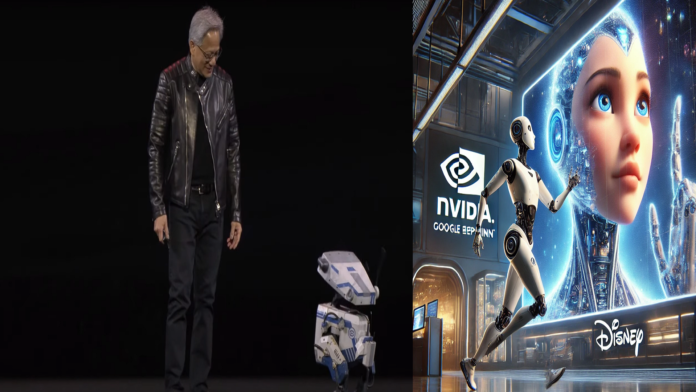In an unprecedented collaboration, NVIDIA, Google DeepMind, and Disney Research have embarked on a groundbreaking journey to revolutionize robotics and artificial intelligence (AI). This alliance aims to bring Disney’s iconic characters to life through advanced robotics, leveraging cutting-edge technologies to create lifelike embodiments that interact seamlessly with humans. As Shivam Sharma, Creative Marketing Head at Gentle & Wise Global Consulting—a leading management consulting firm headquartered in the USA.
I am excited to explore the transformative potential of this ‘out of the world’ collaboration.
The Convergence of AI and Robotics
At the heart of this partnership lies the development of Newton, an open-source physics engine designed to simulate robotic movements in real-world environments. Built on NVIDIA’s Warp framework, Newton aims to bridge the gap between simulation and physical execution, enabling robots to perform complex tasks with greater precision and efficiency. This initiative is a joint effort involving NVIDIA, Google DeepMind, and Disney Research, each bringing unique expertise to the table. The Economic Times+1TechCrunch+1
Watch this Video:
Disney’s Vision: Bringing Characters to Life
Disney’s involvement in this collaboration is driven by its ambition to create next-generation entertainment robots that can interact seamlessly with guests. A notable example is the Star Wars-inspired BDX droids, which made a captivating appearance during NVIDIA’s GTC 2025 keynote. These robots, powered by the Newton physics engine, exhibit expressive behaviors and mobility, offering a glimpse into the future of immersive entertainment.
Advancements in Robotic Aesthetics
Beyond functional capabilities, achieving lifelike appearances is crucial for creating authentic robotic characters. Recent advancements in biohybrid robotics have led to the development of lab-grown, self-healing human skin designed to cover robotic faces. Researchers have successfully cultured living skin on robotic fingers, replicating the elasticity and texture of human skin. This innovation enhances the realism of humanoid robots, making interactions more natural and engaging. livescience.com+3Popular Science+3arXiv+3arXiv+1livescience.com+1
Similarly, the creation of electronic skin—flexible, stretchable materials embedded with sensors—allows robots to mimic the sensory capabilities of human skin. These materials enable robots to perceive touch, temperature, and pressure, further bridging the gap between artificial and biological entities. arXiv+4Wikipedia+4Wikipedia+4
Implications for Sustainability: A big questions rises, is it all scaling up the robotics, entertainment and AI industry too fast, probably at the cost of a utopian future land like Hollywood movies coming to life kind of a situation, if not to mention even something bigger coming way, with further advancements of Artificial Intelligence into Stem cell technology, DNA Science, space missions and speeding up R&d with help from Quantum computing and diving into unknown wormholes of infinite possibilities, on a positive note, atleast. An age of Abundance. May be?
Challenges and Ethical Considerations
While the prospects are exciting, several challenges must be addressed:
- Technical Complexity: Developing robots that can safely and effectively interact with humans requires overcoming significant technical hurdles, including motion planning, perception, and decision-making.
- Ethical Implications: The deployment of lifelike robots raises ethical questions about employment, privacy, and the nature of human-robot relationships. It is essential to establish guidelines that ensure these technologies are used responsibly.
- Public Acceptance: The success of robotic characters depends on public acceptance. Efforts must be made to ensure that these robots enhance the guest experience without causing discomfort or diminishing the value of human interactions.
The Road Ahead
The collaboration between NVIDIA, Google DeepMind, and Disney Research represents a significant milestone in the integration of AI and robotics within the entertainment industry. As these technologies evolve, we can anticipate a future where the boundaries between the digital and physical worlds blur, offering experiences that were once the realm of science fiction. At Gentle & Wise Global Consulting, we are committed to guiding organizations through these transformative times, ensuring that innovation aligns with strategic objectives and sustainability principles.
In conclusion, the partnership between these technological and entertainment giants heralds a new era in which storytelling, technology, and sustainability converge to create enriching experiences for audiences worldwide. As we stand on the cusp of this exciting frontier, it is imperative to navigate the opportunities and challenges with foresight and responsibility, ensuring that the advancements serve the greater good.


